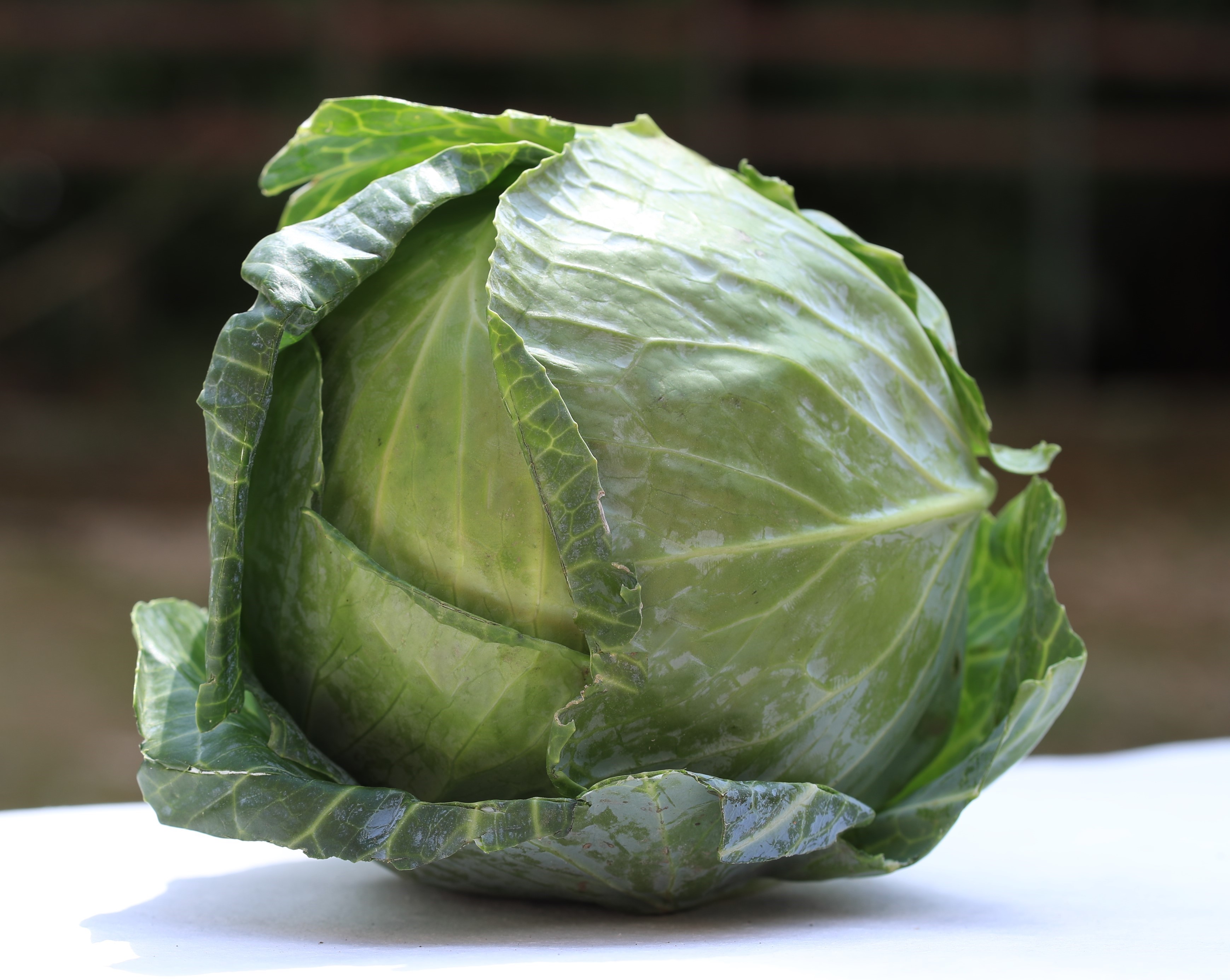

Brassica oleracea var. capitata L.
|
Cabbage is a cruciferous vegetable belonging to the family Brassicaceae. It is a leafy vegetable. Cabbage is a rich source of bioactives like- Glucosinolates (glucobrassicin, sinigrin and glucoiberin) and carotenoids (beta-carotene). Cabbage possesses anti-cancerous activity owing to its ability to up-regulate the synthesis of pro-apoptotic proteins and inhibit proliferation of tumor cells. Mode of Consumption : Fresh as salad, sauteed, fried, boiled and pickled |
| Plant Details | Agro-climatic Zone | Vernacular Names | Pictures |
| Scientific Name: Brassica oleracea var. capitata L. Family: Brassicaceae Burnett Class: Magnoliopsida Order: Capparales Genus: Brassica L. Fruiting Season: All round the year Parts: Leafy head |
|
Andhra Pradesh : Kyabeji Assam : Bandha kobi Bihar : Patta gobi Himachal Pradesh : Patta gobi Karnataka : Elekosu Kerala : Kabej Punjab : Patta gobi Tamil Nadu : Muttai kosu Uttar Pradesh : Patta gobi Uttarakhand : Patta gobi |
 Freash leaves head |
| Compound/Extract | Activity | Mode of Action | Marker/References |
| Glucosinolates extract from cabbage | Anticancer | Glucosinolates extract from cabbage decreases cell growth by increasing S100P and Bax expression and decreased Bcl-2 expression in RT4 cell, increases Bcl-2, Bax, and anillin expression and also decreases the S100P expression in T24 cells. | Bax, Bcl-2 , anillin and S100P expression[2] |
| Glucosinolates extract from cabbage | Anticancer | Glucosinolates extract from cabbage helps in induction of estradiol metabolism and the related cytochrome P-450 system, expression of cyclin-dependent kinase-6 and induction of G1 cell and also p53 dependant apoptosis cycle arrest. | Cyt P-450, CDK-6 and p53[5] |
| Major Class | Metabolites (Content of bioactives: mg/100g Fresh Weight) |
| Carotenoid | α- Carotene: 0.033 mg/100g, β- Carotene: 0.042 mg/100g[4] |
| Glucosinolate | Glucobrassicin: 24.34 mg/100g, Glucoiberin: 24.67 mg/100g, Sinigrin: 32.43 mg/100g[4] |
| Effect | Observation | DOI |
| Human clinical studies | Significant modification in quality and quantity of gut microbiota (Eubacterium hallii, Phascolarctobacterium faecium, Alistipes putredinis, and Eggerthella spp.) | DOI: 10.3945/jn.109.108191 |
| Disease | Formulation | Reference | Author | TKDL |
| Information from Wealth of India | Reference |
|
CSIR(1948).The Wealth of India, Raw materials,Vol.-I ,P.220, New Delhi, India |
| 4.2, 04.2.1, 04.2.1.1, 04.2.1.3, 04.2.2.3, 04.2.2.5, 04.2.2.6, 04.2.2.8 |
| CSIR-North East Institute of Science and Technology, Jorhat-6, Assam, India
CSIR-Institute of Himalayan Bioresource Technology, Palampur-61,Himachal Pradesh, India |